This article was medically reviewed by Troy A. Miles, MD. Dr. Miles is an Orthopedic Surgeon specializing in Adult Joint Reconstruction in California. He received his MD from the Albert Einstein College of Medicine in 2010, followed by a residency at the Oregon Health & Science University and fellowship at the University of California, Davis. He is a Diplomat of the American Board of Orthopaedic Surgery and is a member of the American Association of Hip and Knee Surgeons, American Orthopaedic Association, American Association of Orthopaedic Surgery, and the North Pacific Orthopaedic Society.
There are 8 references cited in this article, which can be found at the bottom of the page.
This article has been viewed 165,834 times.
Shin splints are a common syndrome for people exposed to high impact activities, including runners, dancers, and military personnel. Although supportive shoes can help prevent shin splints, you may still experience pain along the tibia bone of your legs following extended periods of high-impact exercise.[1] Taping your shins with trainer’s tape or kinesiology tape can help to alleviate the pain of shin splints.
Steps
Applying Tape for Shin Splints
-
1Purchase tape to wrap your shin splints. You can purchase either trainer’s tape or kinesiology tape to help relieve your shin splints. The tape will limit your range of motion and may allow more blood to flow to the injured area.
- You can get trainer’s and kinesiology tape at most pharmacies and sports stores, and even some larger retailers.
- Some professionals suggest black tape, which may adhere better to sweaty skin.
- Though duct tape may work in a pinch, as it is as supportive as trainer's tape, duct tape was not meant to be used on skin, and therefore the adhesive is much stronger. If you tape your legs with duct tape, you risk blistering and shearing of the skin.
-
2Wash and dry your leg. Clean any oils, sweat or dirt off your skin with a mild cleanser and some water. Make sure to dry it thoroughly with a towel. Washing and drying your leg can help ensure that the tape adheres effectively to your skin.[2]
- You can use any kind of mild or simple soap to clean your leg.
Advertisement -
3Shave your leg(s). If you don’t want to use an underwrap or are especially hairy, consider shaving your leg(s). Shaving can help the tape adhere better. It can also be less painful to remove the tape from your leg.[3]
- Make sure to shave carefully so that you don’t cut your skin and cause further injury.
-
4Use an underwrap before taping. If you prefer not to place the tape against your skin, consider placing an underwrap between the tape and your skin. Be aware that using underwraps is not as effective as using tape only.[4]
- Underwrap and skin adhesives are optional.
- Simply apply the skin adhesive and the underwrap to the areas of your skin you plan to tape.
- You can get underwrap and skin adhesive at most pharmacies and possibly some sports stores.
-
5Cut the tape for application. Depending on whether you purchase trainer’s or kinesiology tape or strips, you’ll need to cut the tape before you wrap your shin. This can help ensure you use the right amount of tape to effectively treat your shin splints and will keep you from wasting.
- Cut pieces of your tape to a length of 12–18 inches (45.7 cm) depending on how tall you are. If you are smaller, use less tape, and if you are taller, use more.
- Round the edges of the tape for easier application.
- Remove any backing from the tape before you wrap your shin.
-
6Flex your foot and start wrapping tape. Flexing your foot can help the tape stay on your skin more effectively. Once you’ve done this, place one end of your tape on the top of your foot just below your pinky toe.
- Flex your foot to a 45 degree angle.
-
7Continue to wrap the tape around your foot. From the top of your foot by your pinky toe, wrap the tape under your foot and then across your arch at the highest point, angling the tape upwards towards your skin.[5]
- The tape should be taut but not tight. You don’t want to cut off your circulation.
- If your skin gets very red or starts to throb, you may have wrapped it too tightly.
-
8Bring the tape up your shin. Wrap the tape in a diagonal fashion upwards across the front of the leg. You can tape your entire shin or just the areas affected with shin splints.[6]
- Tape around the leg two more times, overlapping each previous band of tape slightly. The tape should cross over the part of your shin that is in pain.
- Do not wrap your calf muscle.
-
9Test the tape application. Walk around before exercising. If the tape is too tight, remove it and repeat the taping process, wrapping the tape more loosely in the same fashion.
-
10Try different taping methods. In addition to basic shin taping, you can try a couple of other different taping methods. These may be more effective than basic taping for your shin splints.[7]
- Wrap using the “X” arch taping method by holding your foot at a 90-degree angle with your toes curled slightly downward. Use one strip of tape around the ball of your foot as an anchor. Place additional strips of tape at the base of each toe and extend them up to your shin. You can opt to put tape strips around the arch of your foot for added support.
- Wrap using the “lateral taping” method by starting tape at the front area of the ankle and continuing to wrap it around the back. Then wrap the tape up the outer calf and shin area at a 45-degree angle. Repeat this process four times for a support.
-
11Remove the tape. After your leg begins to feel better or once you’re done exercising, take the tape off of your shin and foot. This can help your skin breathe and keep it from getting infected.
- If you chose to not shave your legs before taping, you may experience some discomfort.
Treating Shin Splints
-
1Take time to rest. Give your body a chance to rest or switch to lighter activities. Immobility and/or doing lower-impact activities can help heal your shin splints.[8]
- If you do high-impact activities such as running or tennis, switch to lower-impact options. You can try biking, walking, or swimming to stay active while giving your legs a rest.
- You may also want to rest your legs completely for a while.
- Begin gently moving the affected area if you take a few days of full rest to help prevent stiffness unless it causes too much pain.
-
2Apply ice to the affected area. Use an ice pack on the painful area of your shin. This can help reduce swelling and relieve pain.[9]
- You can use an ice pack as often as necessary for 20 minutes at a time.
- You can take a slush bath by mixing ice and water in a bathtub. Soak your legs for up to 20 minutes.
- You can freeze a plastic foam cup full of water to gently massage the affected area.
- If it is too cold or your skin gets numb, remove the pack.
-
3Take pain medication. Consume pain relievers for severe discomfort and/or as necessary. These medications may help alleviate pain and possible swelling.[10]
- Take over-the-counter pain relievers such as ibuprofen, naproxen sodium or acetaminophen.
- Ibuprofen and naproxen sodium may also help alleviate some of the swelling.
- Aspirin should not be taken by anyone under 18 without a doctor's permission, due to the risk of Reye's syndrome.
-
4See your doctor. If home treatment and other options don’t relieve your shin splints, see your doctor. Shin splints are very common and very treatable, and getting a medical diagnosis can help you get proper treatment.[11]
- You can see your regular doctor or visit an orthopedist, who specializes in treating disorders such as shin splints.
- Your doctor will conduct a physical exam to check for signs of shin splints and will also likely ask for a health history, including factors such as what type of activities you do and what type of shoes you wear.
Preventing Shin Splints
-
1Wear the right shoes. Choose footwear that is appropriate for your sport and activity level. This can help ensure that your foot and legs have proper support and cushioning. It may also help prevent shin splints.[12]
- For example, if you run on roads, get shoes with ample cushion. In addition, replace your shoes about every 350 to 500 miles (560 to 800 kilometers).
- Most sports stores and specialty stores can help you find the right shoes for your activity.
-
2Consider wearing arch supports. Think about wearing supports in your shoes. Arch supports can help prevent the pain of shin splints, especially if you have flat arches.[13]
- You can get arch supports at many pharmacies and most sports stores.
-
3Do lower impact activities. Try cross-training with lower impact sports, such as swimming, walking or biking. This can help relieve shin splints while staying active and may help prevent future bouts of them.
- Be sure to begin new activities slowly and increase them gradually.
-
4Add strength training sessions. Shin splints may occur when your shin and/or calf muscles are weak. Add some strength training exercises to help strengthen your calf muscles. This may also help prevent getting shin splints in the future.[14]
- Toe raises may help strengthen your calves and prevent shin splints. Stand up and slowly rise up on your toes. Hold for two seconds and then slowly lower back to the ground. Repeat 10 times or as many times as you can.
- As you get stronger, you can add weights to toe raises.
- Leg presses and leg extension may also help with shin splints.
Warnings
- Some people are allergic to the ingredients in trainer’s tape or kinesiology tape. You may want to test the tape on your skin before using it.⧼thumbs_response⧽
Things You'll Need
- Trainer’s tape or kinesiology tape
- Skin adhesive (optional)
- Underwrap (optional)
- Scissors
References
- ↑ https://www.healthdirect.gov.au/shin-splints
- ↑ http://www.sportsinjuryclinic.net/sport-injuries/ankle-achilles-shin-pain/shin-splints/shin-splints-taping
- ↑ http://www.sportsinjuryclinic.net/sport-injuries/ankle-achilles-shin-pain/shin-splints/shin-splints-taping
- ↑ http://www.sportsinjuryclinic.net/sport-injuries/ankle-achilles-shin-pain/shin-splints/shin-splints-taping
- ↑ https://www.sports-injury-physio.com/post/taping-technique-shin-splints-tib-post-tendinopathy
- ↑ https://www.sports-injury-physio.com/post/taping-technique-shin-splints-tib-post-tendinopathy
- ↑ https://physicaltherapyfirst.com/blog/2016/06/21/using-leukotape-for-shin-splints/
- ↑ https://www.healthdirect.gov.au/shin-splints
- ↑ https://www.nhs.uk/conditions/shin-splints/
- ↑ https://my.clevelandclinic.org/health/diseases/17467-shin-splints#management-and-treatment
- ↑ http://www.mayoclinic.org/diseases-conditions/shin-splints/basics/tests-diagnosis/con-20023428
- ↑ https://my.clevelandclinic.org/health/diseases/17467-shin-splints#management-and-treatment
- ↑ https://orthoinfo.aaos.org/en/diseases--conditions/shin-splints/
- ↑ https://my.clevelandclinic.org/health/diseases/17467-shin-splints#management-and-treatment
About This Article
Before taping your shin splints, shave your legs and wash them thoroughly so the tape can stick better. If you don’t like the feeling of tape on your skin, you can use an underwrap, but this usually isn’t as effective as just tape. Once your legs are ready, grab a pair of scissors and cut off 12 to 18 inches of trainer’s or kinesiology tape. As you get ready to apply the tape, flex your foot to a 45-degree angle to help it stay on better. To wrap, place one end of the tape on top of your foot just below your pinky toe. Then, wrap your foot and gradually bring the tape up your shin, stopping right below your calf muscle. Tape around your leg 2 more times before walking around a bit to test out your wrap. For more help form our Medical co-author, like how to prevent shin splints in the first place, read on.

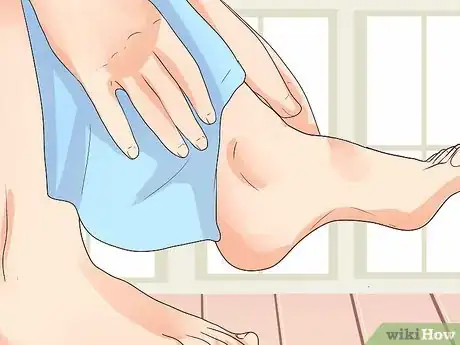
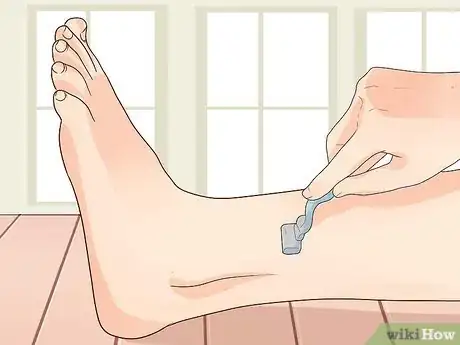
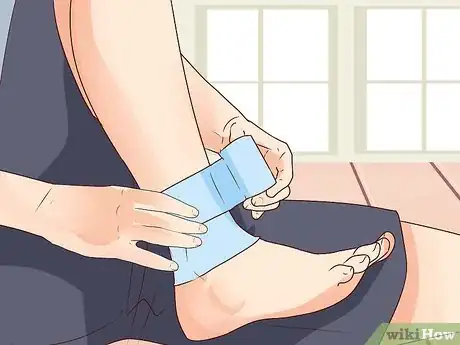
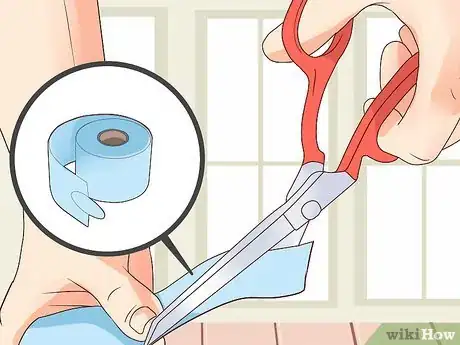
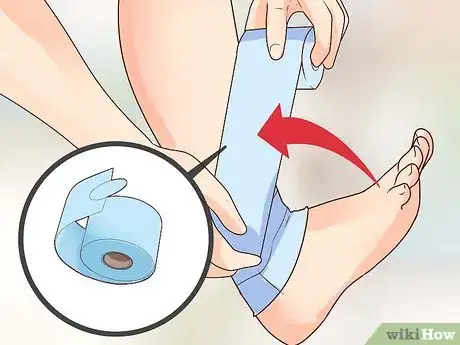
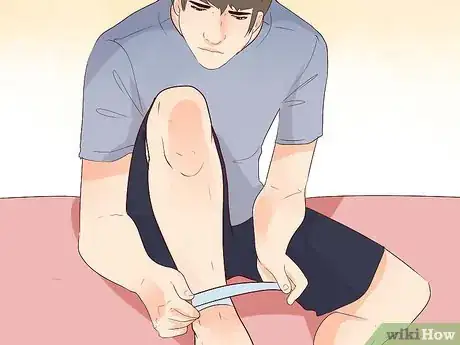
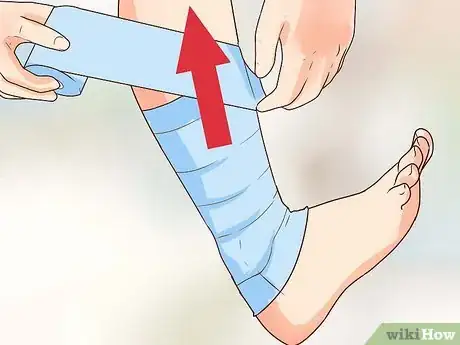
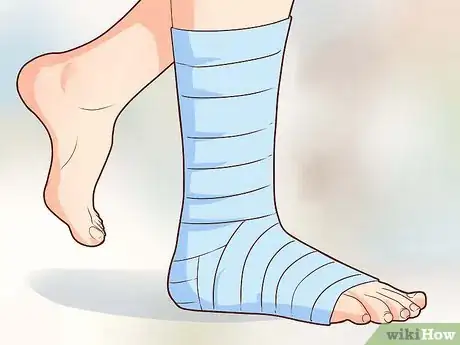
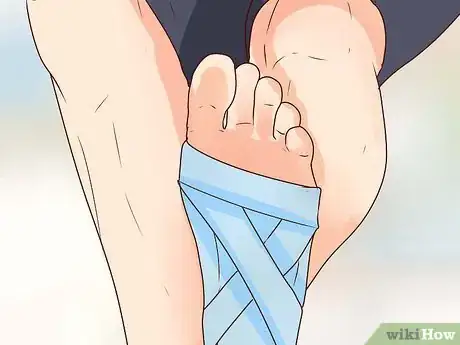
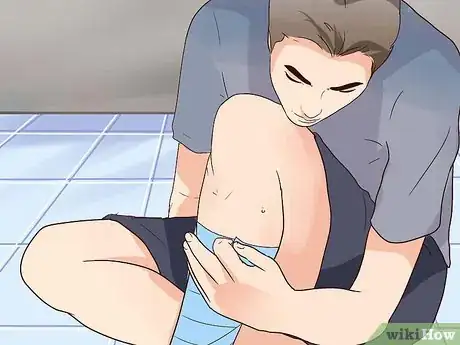
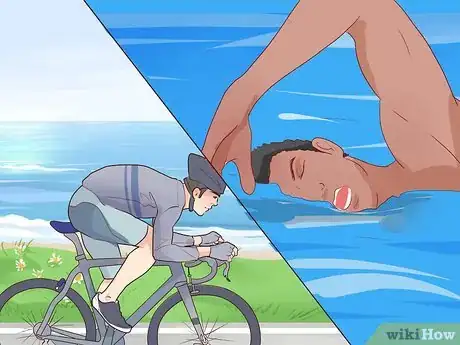
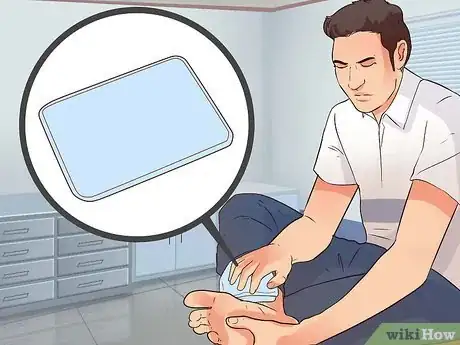
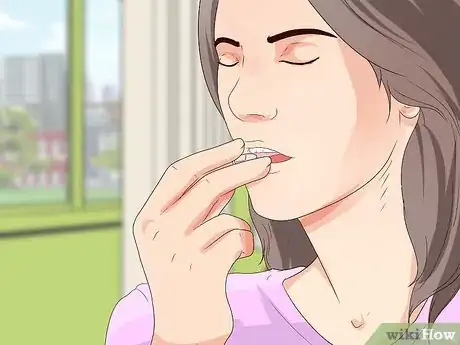
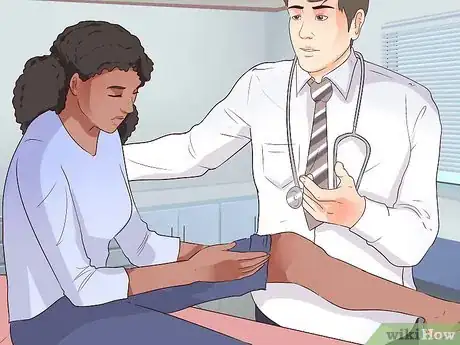
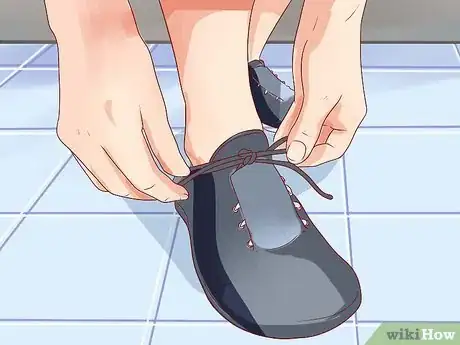
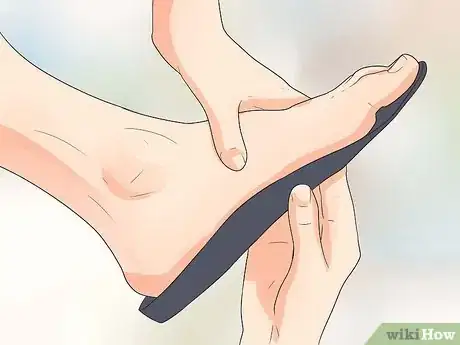
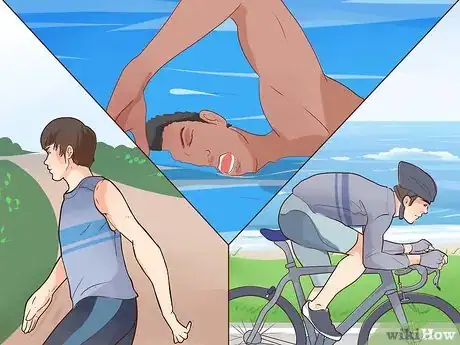


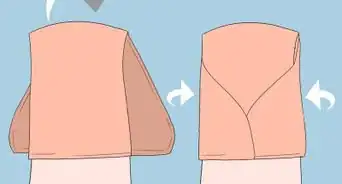
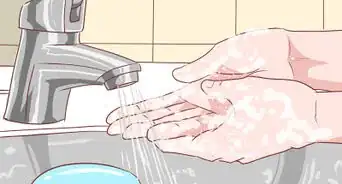
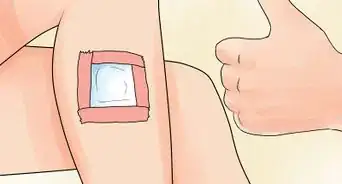

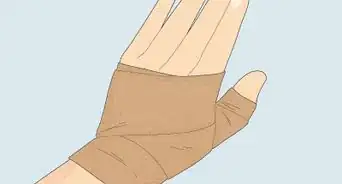
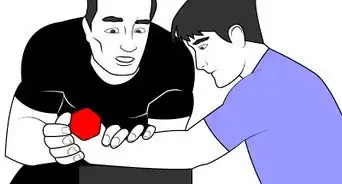

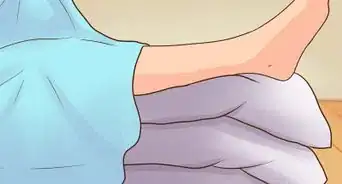
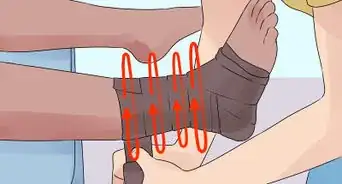
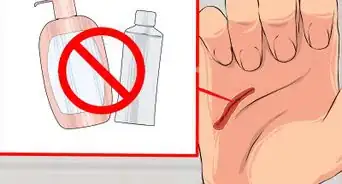
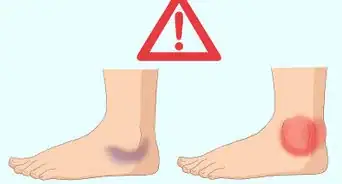










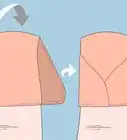




































Medical Disclaimer
The content of this article is not intended to be a substitute for professional medical advice, examination, diagnosis, or treatment. You should always contact your doctor or other qualified healthcare professional before starting, changing, or stopping any kind of health treatment.
Read More...